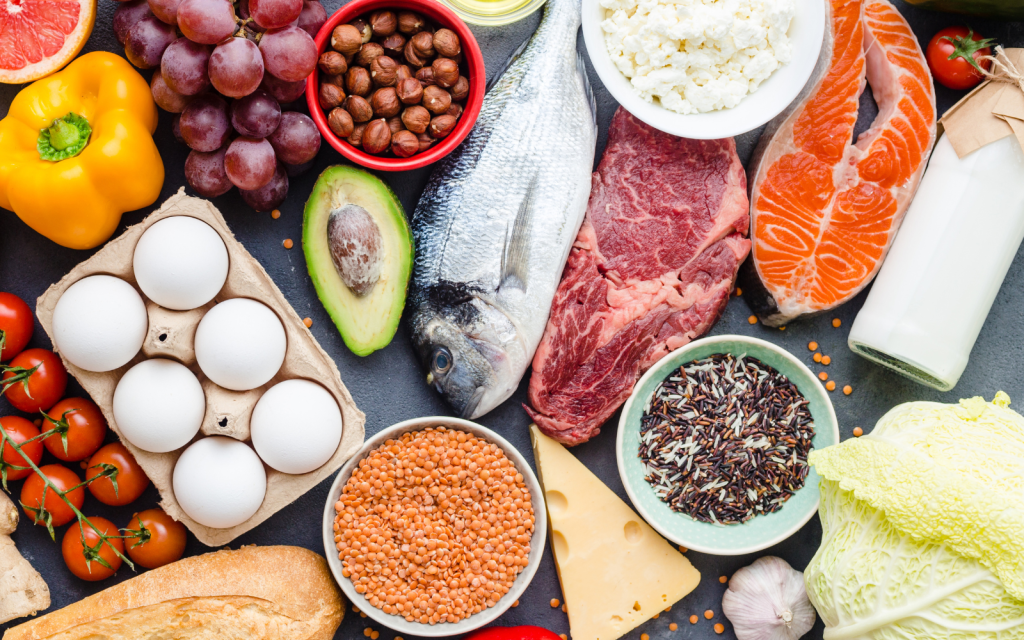“Dieting” is a term that has long been associated with sacrifice, hunger, and restraint, often perceived as a grueling act of sheer will to lose weight. But it’s time to dispel that myth. Dieting, in its true essence, is not just about shedding pounds; it’s about embracing a lifestyle that nourishes and revitalizes the body. “The concept of dieting needs a makeover. It’s not about starving yourself skinny; it’s about fueling yourself for health,” asserts nutritionist Dr. Samantha Greene. Let’s journey into understanding dieting as a holistic approach to wellness, far beyond the calorie counts and food restrictions.
Section 1: Understanding Nutrition Basics

At the foundation of every diet are macronutrients and micronutrients, the vital elements that sustain life. Macronutrients include proteins, crucial for muscle repair and recovery; fats, necessary for hormonal balance and cellular health; and carbohydrates, the body’s primary energy source. Micronutrients, encompassing a variety of vitamins and minerals, play a myriad of roles in bodily functions and overall health.
It’s not just about what nutrients you consume, but also striking the right balance. “Diversity in your diet isn’t just pleasing to the palate; it’s critical for health. Think of food as your ally, a vast nutritional toolkit that your body needs to thrive,” explains dietitian Laura Fitzgerald.
Section 2: Popular Diet Trends (Keto, Paleo, Vegan, etc.)

The landscape of diet trends is vast and varied. From the fat-rich Keto diet and ancient-cuisine-inspired Paleo diet to the plant-based Vegan diet, each has unique principles and health claims.
While these diets can offer benefits, such as improved energy or potential weight loss, they can also present challenges, including restrictive food rules or potential nutrient deficiencies. “Selecting a diet shouldn’t be a whimsical decision. It’s essential to consider your personal health goals, dietary preferences, and lifestyle when choosing a nutritional plan,” recommends Dr. Paula Martin, a specialist in dietary science. The best diet is one tailored to you.
Section 3: Tips for Healthy Dieting

Dieting healthily isn’t about following food rules to the letter, but rather establishing habits that promote well-being:
- Hydration: Often overlooked yet vital, water is involved in every bodily process.
- Fiber intake: Critical for digestive health and prolonged satiety.
- Regular meals: Skipping meals can backfire, leading to excessive hunger and overeating.
- Meal planning: Prepares you for success and helps curb impulsive eating.
- Remember, attuning to your body’s natural signals of hunger and fullness is paramount. It teaches you to respond to your body’s needs rather than eating by the clock.
Section 4: The Psychological Aspect of Dieting

Success in dieting transcends the physical; it’s deeply rooted in our psyche. A positive mindset, resilience, and a good relationship with food are key. Emotional eating is a common obstacle, where food becomes a comfort rather than nourishment.
“Dieting is as much about nourishing the mind as it is the body. A healthy relationship with food means understanding its value beyond just taste or calories, recognizing it as sustenance, joy, and communal bond,” shares Dr. Joshua Kline, a psychologist specializing in eating behaviors.
Conclusion:
Dieting, when approached holistically, is a journey of self-discovery, resilience, and ultimately, well-being. It’s a personal voyage into better health, not just a path to a slimmer figure. Remember, there’s no universal solution in dieting—what works for one may not work for another. Embrace the journey and celebrate the incremental victories along the way. After all, in nourishing your body, you’re nourishing your life.
Sources:
Introduction and holistic approach to dieting:
Mann, T., Tomiyama, A. J., Westling, E., Lew, A. M., Samuels, B., & Chatman, J. (2007). Medicare’s search for effective obesity treatments: Diets are not the answer. American Psychologist, 62(3), 220–233. DOI: 10.1037/0003-066X.62.3.220
Understanding Nutrition Basics:
Whitney, E., & Rolfes, S. R. (2018). Understanding Nutrition (15th ed.). Cengage Learning. ISBN: 9781337392693
Popular Diet Trends (Keto, Paleo, Vegan, etc.):
Dashti, H. M., Mathew, T. C., Hussein, T., Asfar, S. K., Behbahani, A., Khoursheed, M. A., … & Al-Zaid, N. S. (2004). Long-term effects of a ketogenic diet in obese patients. Experimental & Clinical Cardiology, 9(3), 200–205. Retrieved from https://www.ncbi.nlm.nih.gov/pmc/articles/PMC2716748/
Manheimer, E. W., van Zuuren, E. J., Fedorowicz, Z., & Pijl, H. (2015). Paleolithic nutrition for metabolic syndrome: systematic review and meta-analysis. The American Journal of Clinical Nutrition, 102(4), 922–932. DOI: 10.3945/ajcn.115.113613
Craig, W. J., & Mangels, A. R. (2009). Position of the American Dietetic Association: Vegetarian diets. Journal of the American Dietetic Association, 109(7), 1266–1282. DOI: 10.1016/j.jada.2009.05.027
Tips for Healthy Dieting:
Rolls, B. J., Ello-Martin, J. A., & Tohill, B. C. (2004). What can intervention studies tell us about the relationship between fruit and vegetable consumption and weight management? Nutrition Reviews, 62(1), 1–17. DOI: 10.1111/j.1753-4887.2004.tb00001.x
The Psychological Aspect of Dieting:
Van Strien, T. (2018). Causes of Emotional Eating and Matched Treatment of Obesity. Current Diabetes Reports, 18(6), 35. DOI: 10.1007/s11892-018-1000-x
Conclusion:
Tribole, E., & Resch, E. (2012). Intuitive Eating, 3rd Edition. St. Martin’s Griffin. ISBN: 9781250004048
